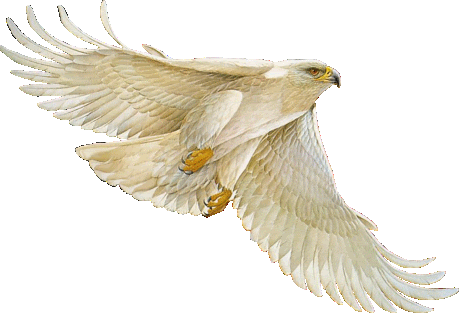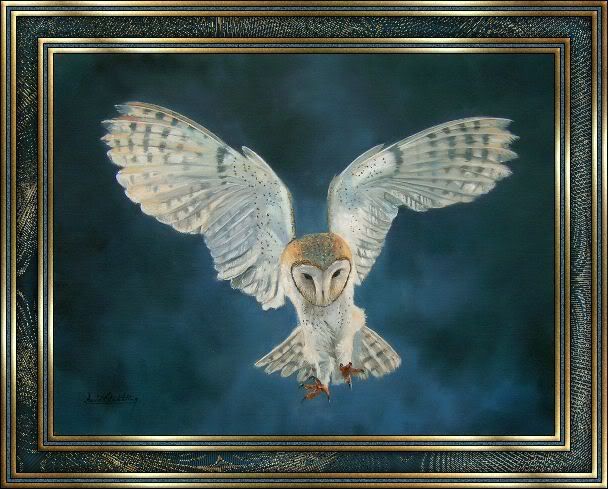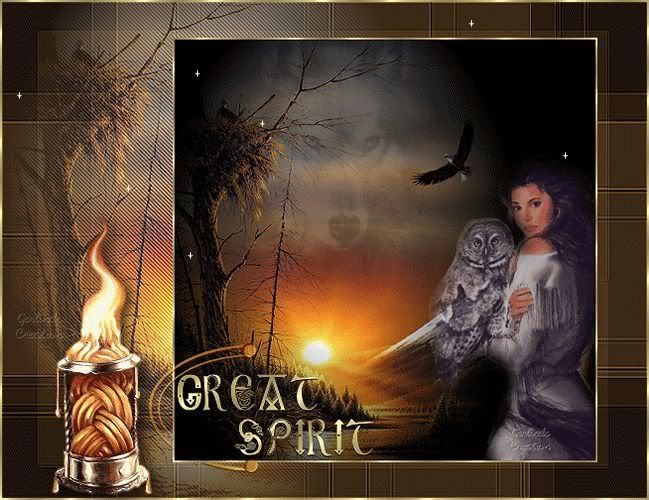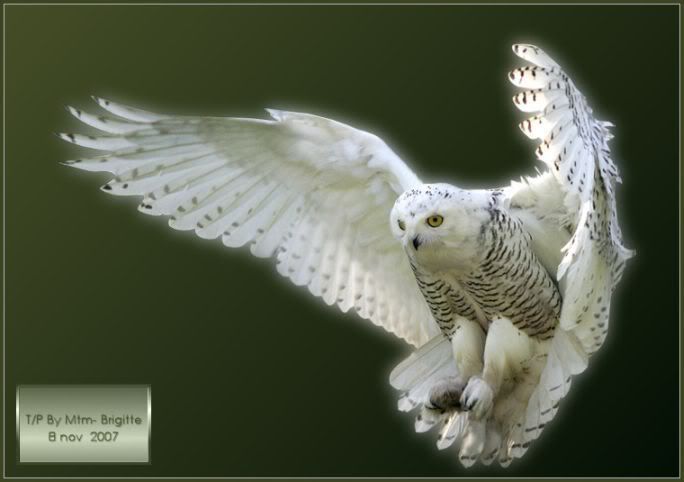
Just a place for all my favourite raptor images, and stories. Will include peregrin falcons during this years season.
Saturday, October 3, 2009
Saturday, July 18, 2009
Tribute to Orville
Tribute and Farewell to Orville
Devoted father and mate to Scout...Orville's life tragically ended too soon the weekend of July 4th, 2009. I will always remember him for his falcon smile
Friday, June 12, 2009
Handsome the Peregrin returns!!!

Officials find it remarkable that this bird has outlived most, especially without a nest and recent attacks by other falcons. Wildlife experts tell Eyewitness News the falcon's health is poor, but are hopeful the falcon can recover to prove his legacy isn't over just yet.

Saturday, June 6, 2009
Tribute to Mariah and Kaver,, AWESOME!!!!
""It may be the end of an era here in Rochester, NY, but Mariah and Kaver will never be forgotten. Their legacy lives on through their many offspring and in the memories of their faithful fans! """
Sunday, May 31, 2009
Columbus may 29, 2009~getting ready for bed
Getting ready for bed, the kids return to the box for the night...
thanks Skygirlblue!!
Tuesday, May 12, 2009
Tiago,, feeds his 4 Eyas
Awesome vid,, Rhea Mae was doing the hunting (they share chores),
LOL
Wednesday, April 22, 2009
Tuesday, April 21, 2009
St. Vrain Bald Eagle Nest - failed nest 3 EYAS dead
Male went missing, and the female eagle could not feed and keep the EYAS warm,
This slide show,, is excellent though to show Eagles building their nest.
I hope the female, can find a new mate, and re-clutch new eggs,, season is still early,
we may yet, have EYAS fledge from this nest,,
Slide show,, link
http://fsvfolks.smugmug.com/photos/swfpopup.mg?AlbumID=6159240&AlbumKey=L98ap
Update - April 21, cam is now offline they have pulled the entire page for the time being.
Friday, April 17, 2009
First Hatch at SF!
this cam is daylight only,,,
link to cam,,
http://www2.ucsc.edu/scpbrg/falconcamera.htm
thanks for the catch EI!!
Peregrin Falcon Eggs About to Hatch?? = San Francisco Scape
>>
Incubation has been going on for about a month. Today, Diamond Lil is wiggling
on the eggs and periodically looks down on them. She has been on them for quite a long time. Rather than do an exchange of duties, Dapper Dan just brought her some food, which she proceeded to mantle.
>>
http://www2.ucsc.edu/scpbrg/falconcamera.htm
Thursday, April 16, 2009
Mariah Update on Imprints
with a new pair of falcons. These new falcons are banded, but, have not been
identified yet.
Mariah was taken to a DEC vet,, in Syracuse New York,,
here is the latest update, in imprints,,
http://rfalconcam.com/imprints/
And Jim Piscello,, has a new posting in his blog, about the new pair,
http://marchlords.com/birdblog/
It's sad that Mariah and Kaver's reign has come to a end in the skys over
Rochester,, New York,, but they have given us 11 years of a very intimate
glimpse into the lives of Peregrin Falcons. We have watched via the
web cams, as they courted,, laid eggs, raised Eyas,, and fledged them to
the wind and sky.
To even have territorial fights,, is a blessing in disguise,, because short
years ago,, the Peregrin Falcon,, was too rare, the population too small
to play out this ancient drama of the reproductive imperative.
We were lucky with Mariah,, karma,, has a way,, and she was rescued
by her most LOYAL 2 fans,, Carol P and Brian H,,from certain death.
If they had not been there, we would have been left,, always wondering
what became of her. Like we wonder about Kaver, and other falcons
we have come to know and love, on the web cams.
I hope Mariah recovers from her injuries, but feel doubtful, she would
prevail for long,, released back to the wild. Older falcons, tend to die
in battles,, like Mae did at King plant. In the raptor world,, it is
truly the youngest and fittest that prevail.
But this is the way of nature, and we can look forward to this new Tiercel
and his mate,, at Rochester,, hopefully they move into one of the cam
scrapes, and we can begin a new cycle of Peregrins raising Eyas,
right in front of our very eyes.
Tuesday, April 7, 2009
Sunday, April 5, 2009
Long thought extinct, Carolina Parakeet rediscovered in Honduras
FOR RELEASE: April 1, 2009
rediscovered in Honduras Captive bird and radio tagged individual shows a non-migratory population survives in vast forested areas ITHACA, NY. -- Long believed to be extinct,--the Carolina
confirmed sighting of the species in the United States, a research team today announced that a small non-migratory population survives in vast areas of neotropical forest in Honduras. A full report is due to be
"The bird we currently have in captivity, the individuals While parrots are not known as long distance migrators, DNA analysis from feathers taken from the birds in
migratory birds is not as strange as it may seem,' says co-author Juan Decares. "The Canada Goose re-introduced across North America is essentially non-migratory in much of its range. While Canada Geese used to migrate though the United States to breed in Canada, there are year-round populations in many parts of the country and they are breeding further south than they did historically. It should not be thought of as uncommon for birds to lose their migratory ability." "Amazingly, America may have another chance to protect the An exotic species, the Monk Parakeet, has thrived where While the establishment of new non-migratory populations Studies done by German researchers have shown that The only member of the parrot family in North America, the *** The Cornell Lab of Ornithology is a nonprofit The Nature Conservancy is a nonprofit organization |
Thursday, March 26, 2009
Large Birds Catching Fish
thanks to Paul,, at KFalcon cam,,
http://www.miguellasa.com/photos/sspopup.mg?AlbumID=1001578
Aurora in Fight with another female
here is the web link to the live cam
http://www.ag-wanderfalken.de/index.php?option=com_wrapper&Itemid=78
and here is Annette's album of the territorial fight in the next box,,
Hopefully both females are ok, and did not inflict serious damage on each other,,
(Aurora has the blue bands)
http://www.kodakgallery.de/ShareLanding.action?c=bozg71ut.3bjjywgbd&x=0&y=rh2rp4&localeid=de_DE
CPF Index of Falcon Cams
http://www.peregrine-foundation.ca/links/Peregrinelinks.html
Tuesday, March 24, 2009
New Tiercel for Mariah??? (fingers crossed)
Awesome pics,, thanks to Joyce,,
what a beautiful Tiercel he is,, we are trying to get a band ID on this guy,,,
http://www.kodakgallery.com/ShareLanding.action?c=tq6stye.70aczjrq&x=0&y=fbvhee&localeid=en_US
Monday, March 23, 2009
LOL, Mariah made the news in Rochester
http://www.13wham.com/news/local/story/Kodak-Falcon-Confused-Wheres-Favorite-Nesting/TBD-9OrrhU2RGsGpnaHBbw.cspx
4 Peregrin Eyas, Getting Fed
Video was shot,, June 6, 2007
Four peregrine falcon chicks feeding in their nest on top of the Mayo Clinic's Guggenheim Building in Rochester, MN
Mariah, has a new Suitor???
Mariah & the new banded Tiercel at Midtown Plaza - 3/22/09
http://www.youtube.com/watch?v=bIyFVnwJvys
And here is Jim's blog and more pics of this "new guy",,
http://marchlords.com/birdblog/2009/03/mariahs-neuveau-beau.html
I sure hope, these 2 pair off, and find one of the new scrapes. (there are 2)
Sunday, March 22, 2009
Bird Cams Around the World
GREAT BOARD!!!
http://www.hostingphpbb.com/forum/viewtopic.php?t=939&postdays=0&postorder=asc&start=0&mforum=peregrinefalcon
Saturday, March 21, 2009
Friday, March 20, 2009
Peregrin Cam in Rome Italy
Main site,,
http://www.birdcam.it/index.php
This pair,, is Aria and Venta,, they are in egg incubation mode.
http://www.birdcam.it/cam.php?camid=1&subpage=cam01.php
More Heartbreak in Rochester
The Tiercel Tybropa-Cree, who was seen mating with "our Queen" about a week ago, and then went missing, has been found dead.
Hit by a car and found beside a busy road.
Just so sad,, I have cried a bucket of tears for Mariah, I doubt we will have EYAS from this beautiful Peregrine this year.
Update at Imprints,,,
http://rfalconcam.com/imprints/
Thursday, March 19, 2009
Bummer in Rochester
Kaver has not returned,, and since Kodak forced the removal of
their nest box,, that they have raised Eyas in for 11 years,,
it doesn't look good for Mariah raising a clutch of kids this year.
Here is a slide show,, of Mariah,, trying to break through the
netting Kodak, put up, to keep her away from where her
scrape was.
http://www.kodakgallery.com/ShareLanding.action?c=tq6stye.8b4hxlp2&x=0&y=2xhkln&localeid=en_US
This situation is similar to Pale Male and Lola,, in New York City,
the building removed their nest,, then after we all protested
re-installed the nest,, but now 5 years later,, Pale Male and Lola,
have not laid another clutch of eggs.
Tuesday, March 17, 2009
DEC NY Peregrine Webcam Listing
DEC NY Webcam listing Buffalo, Albany, and Poughkeepsie.
http://www.dec.ny.gov/animals/7050.html
Friday, March 13, 2009
Rochester Falcon Cam - Mariah and Tybropa-Cree???
http://shakymon.com/rfc-archive.html
This is Mariah's original nest box, that was at the Kodak tower.
Kaver has not come back from migration, and is overdue now.
There is a new Tiercel in Mariah's life though, his name is
Tyrobropa-Cree. And he is a Canadian Tiercel from Scarborough
Ontario,,
and here he is,,

Full update for the Rochester situation at Imprints,, on the
Rochester Falconcam Home website,, for March 12,,
http://rfalconcam.com/imprints/
The main cam view,,,
http://rfalconcam.com/rfc-main/mainView.php
And the 3 cam view,,
http://rfalconcam.com/rfc-main/multiView.php
There is a second nest box,, cams on that scrape will come online soon.
Red Tail Hawk Nest
Two Red-tailed Hawks have built a nest on a window ledge at The Franklin Institute in Philadelphia. The nest sits just outside a window where a camera has been positioned to create this video stream. The camera looks through the glass window pane which is 24 inches wide (~61 cm). No artificial lighting has been added, so the nest is only visible during daylight hours.
http://www2.fi.edu/hawknest.php
LIVE Red Tail Hawk Cam
on Sunday, March 8 Kay laid an egg in the nest, beginning a second year of non-stop nest watching by our dedicated forumers from around the country! Already, Jay has taken some turns at brooding while giving Kay a chance to hunt. We don't know yet if she will lay additional eggs; Redtailed hawks often lay two or three eggs per season. This year, nesting activity began early in January as Kay and Jay began preparations for another brood. Click the links on the right to learn much more!
This is a excellent cam,, very close up,, of this nest!
http://www.kjrh.com/content/news/hawks/default.aspx
Thursday, March 12, 2009
These photos were taken on Lakelse Lake just outside of Terrace, B.C., by the Water Lily Bay Resort.
Eagles are very common in this area. They also feed the swans on the lake all the time
These are amazing photos.Enjoy! Swan and Eagle pictures.
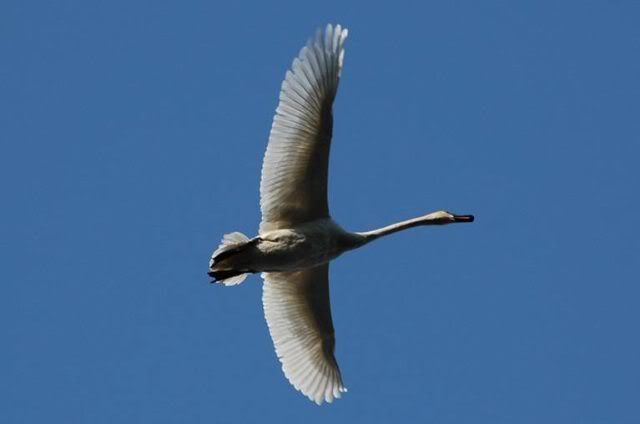
What a beautiful Swan, so Graceful and Majestic.
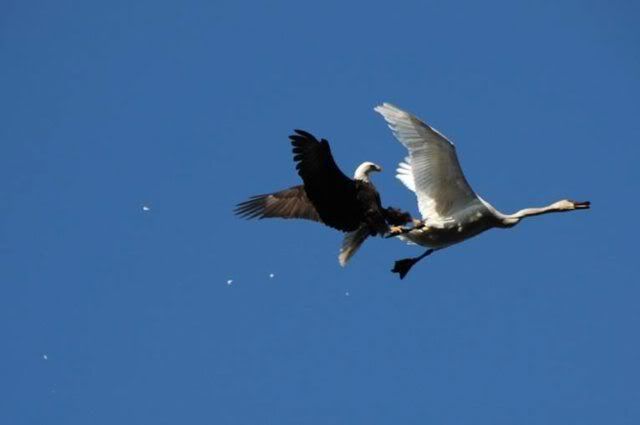
Here comes the Eagle!!!
You can see the trail of loose feathers flying here from the swan.
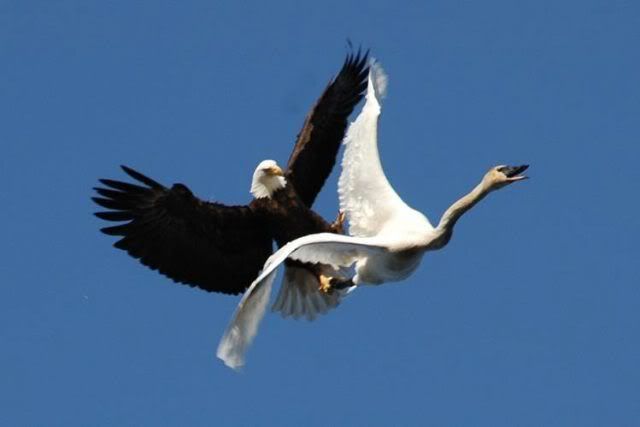
This one is so amazing to see the actual eagle wing span beside the swan.This eagle has put on the brakes to slow the swan down.
The poor swan must be scared to death.It is attempting to actually escape death in the air.

The eagle is loosing his grip on the swan in this picture
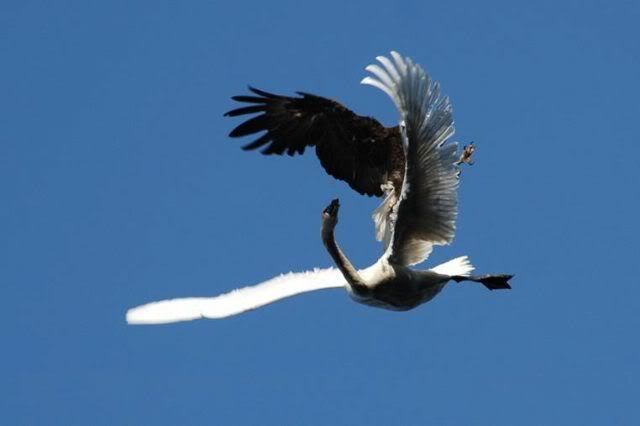
The swan has fully extended it's wings for more power. Look at that swan's wing span, amazing!!!! Now the eagle is losing his grip on the swan completely.
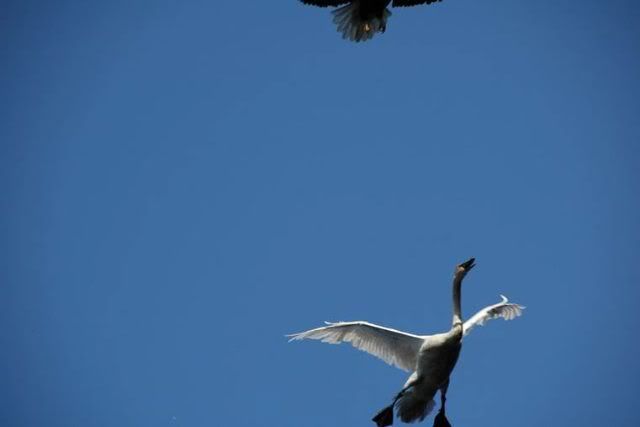
At this point the swan starts falling straight down.The swan keeps it wings fully extended and floatsdown backwards, always watching the eagle above.
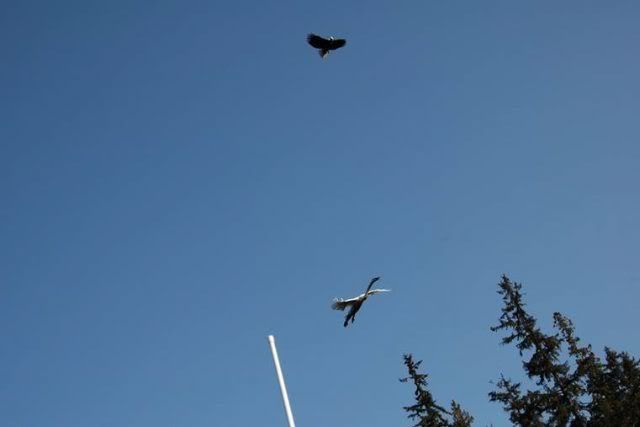
The swan falls into the water below, and swims away and the eagle just looks on at his 'lost' prey.
These are super amazing pictures because I have NEVER seen an eagle attack something so big in mid-air before.
I hope you enjoyed these pictures as much as i did.
Head On Collision Between 2 Bald Eagles
A friend sent me this,, and it was just so cool, I decided to start a new blog, LOL
AERIAL COMBAT OVER LAKE TAPPS , WASHINGTON
Here's a once-in-a-lifetime event captured on film...
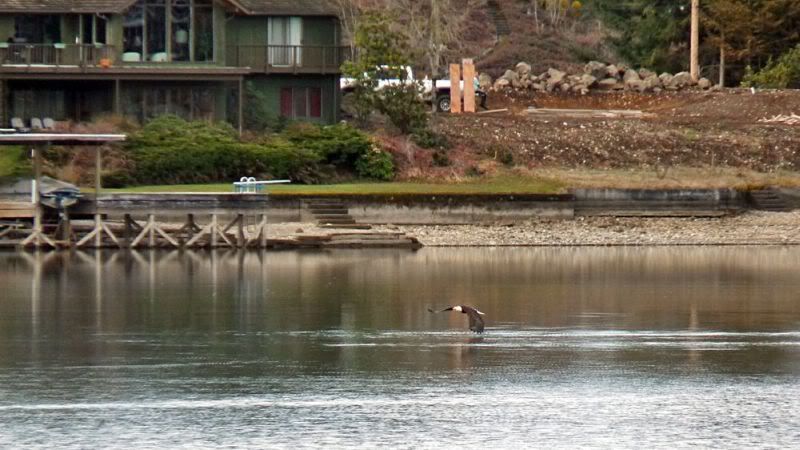
The fellow sitting on the tailgate of his pickup truck never realized the show he was missing.
(620 mm effective Focal Length)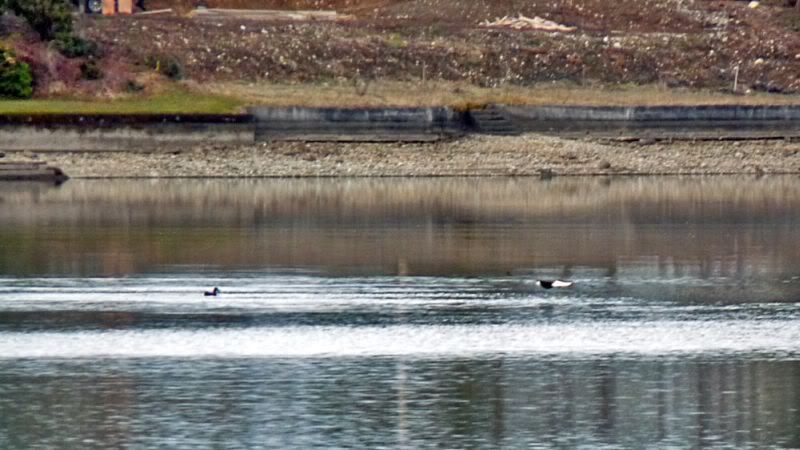
The little duck watches as the Eagle speeds straight at him at about 40 mph.
(760 mm effective Focal Length)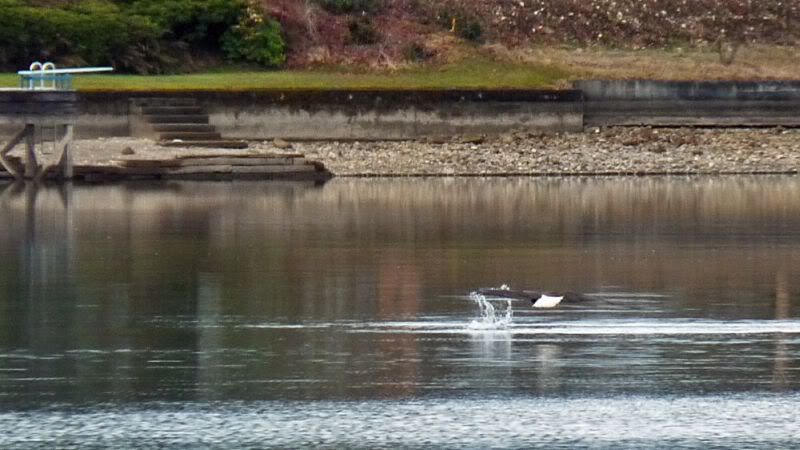
With perfect timing, the duck always dove and escaped with a mighty splash! Then he'd pop to the surface as soon as
the Eagle flew past. This was repeated over and over for several minutes. I worried the poor duck would tire and that
would be the end of him.
(1,040 mm effective Focal Length)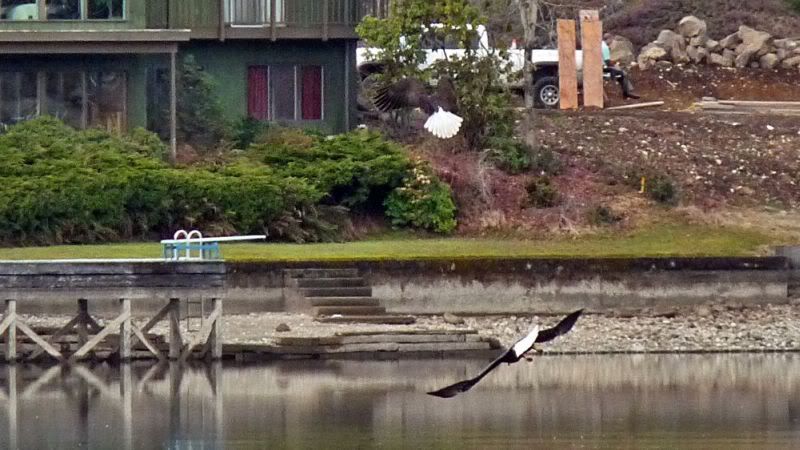
A second Eagle joins the attack! The duck kept diving "just in time", so the Eagles began to dive into the water after him!
(1,150 mm effective Focal Length)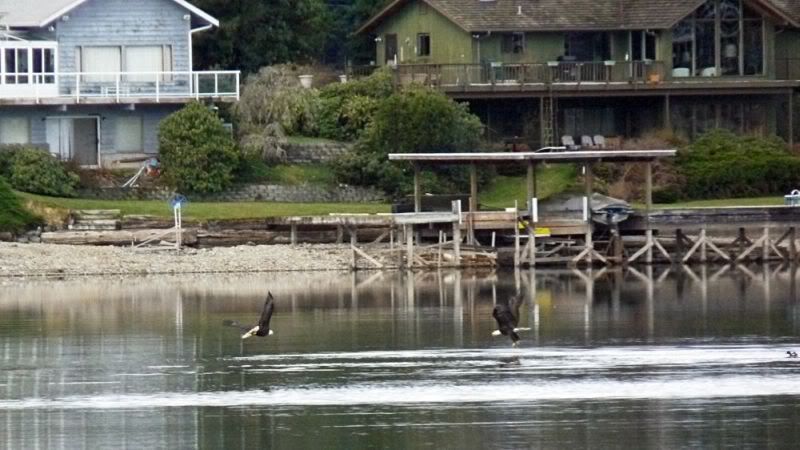
After several minutes the Eagles got frustrated and began to attack each other. They soon began to dive vertically,
level out, and attack head-on in a good old-fashioned game of high-speed "Chicken". Sometimes they banked away
from each other at the last possible second. Other times they'd climb vertically and tear into each other while falling
back toward the water. (The duck catches his breath at the right side of this picture.)
(900 mm effective Focal Length)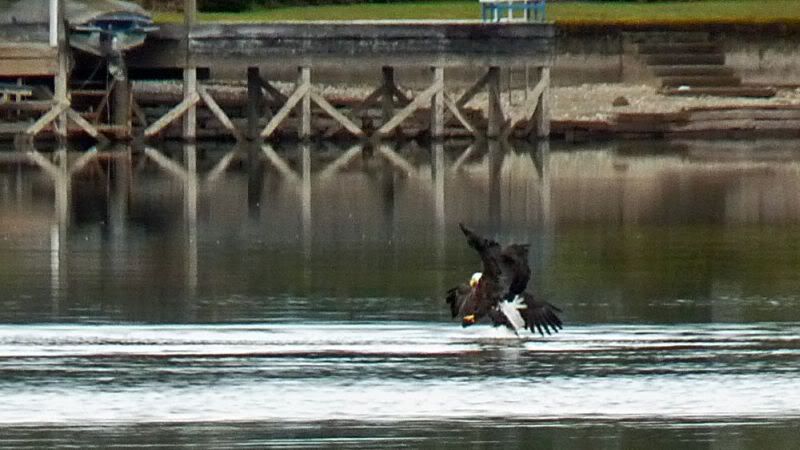
A terrible miscalculation! The luckiest shot of my life catches this 100 mph head-on collision between two Bald Eagles.
(1,320 mm effective Focal Length)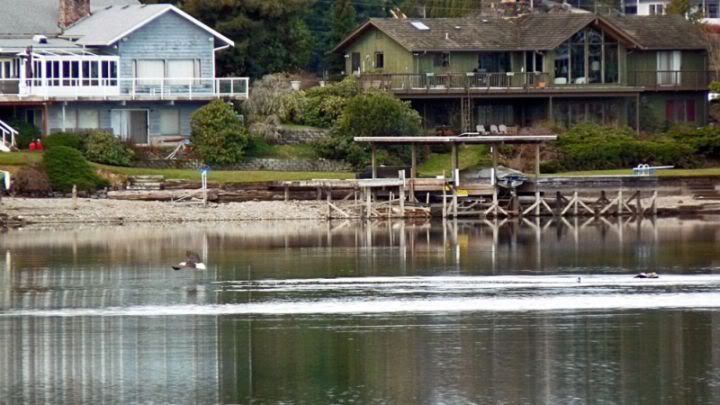
One Eagle stayed aloft and flew away, but the other lies motionless in a crumpled heap.
The lucky duck survived to live another day.
(486 mm effective Focal Length)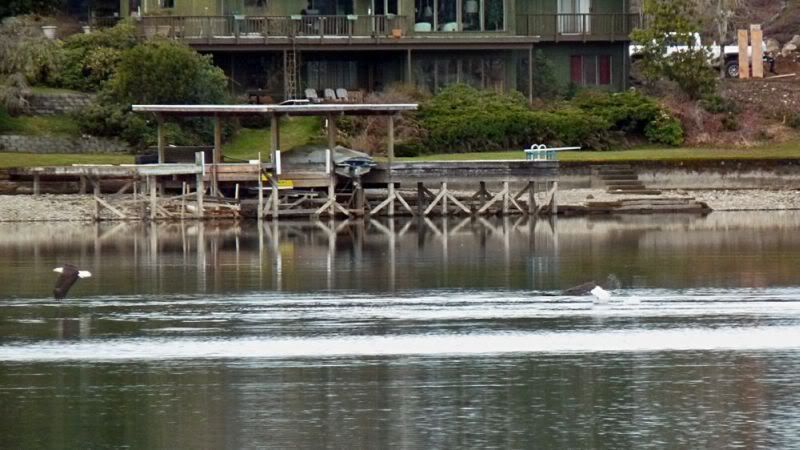
It's sad to watch an Eagle drown. He wiggled, flapped and struggled mostly underwater. He finally got his head
above water and with great difficulty managed to get airborne.. To my astonishment, he flew straight toward me,
and it was the most wretched and unstable bird flight I've ever seen!
(620 mm effective Focal Length)
The bedraggled Eagle circled me once - then lit atop a nearby fir tree. He had a six-foot wingspread and looked mighty angry.
I was concerned that I might be his next target, but he was so exhausted he just stared at me. Then I wondered if he would topple to the ground. As he tried to dry his feathers, it seemed to me that this beleaguered Eagle symbolized America in its current trials.
(1,200 mm effective Focal Length)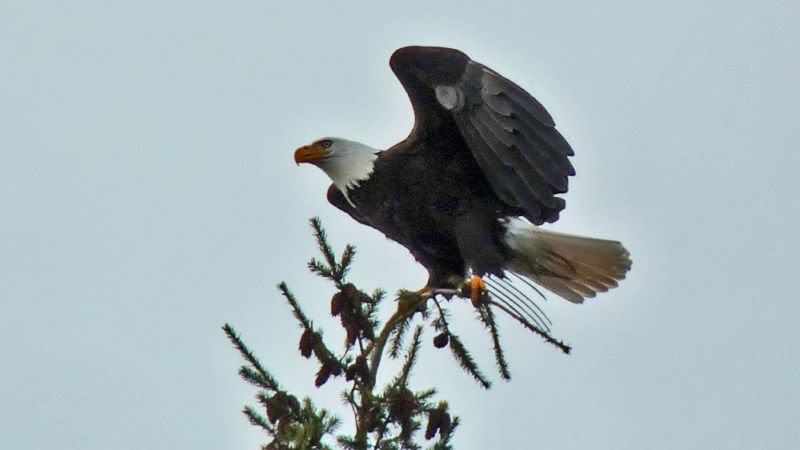
My half-hour wait was rewarded with this marvelous sight. He flew away, almost good as new. May America recover as well.
(1,400 mm effective Focal Length)
Moral of the story: DUCK!
Sunday, March 8, 2009
Followers
Blog Archive
-
▼
2009
(39)
-
►
April
(9)
- Red Tailed Hawk Cam
- St. Vrain Bald Eagle Nest - failed nest 3 EYAS dead
- Closeup Vid,, of Eyas Hatch at SF
- First Hatch at SF!
- Peregrin Falcon Eggs About to Hatch?? = San Franci...
- Mariah Update on Imprints
- Awesome Pics of Dapper Dan in San Francisco
- Neil's New Video from Scotland - Peregrins
- Long thought extinct, Carolina Parakeet rediscover...
-
►
March
(24)
- Large Birds Catching Fish
- Aurora in Fight with another female
- CPF Index of Falcon Cams
- New Tiercel for Mariah??? (fingers crossed)
- LOL, Mariah made the news in Rochester
- 4 Peregrin Eyas, Getting Fed
- Mariah, has a new Suitor???
- Bird Cams Around the World
- Baby Boom for Bald Eagles in Central Illinois!
- Peregrin Cam in Rome Italy
- More Heartbreak in Rochester
- Bummer in Rochester
- Lou's Wicked Raptor Shots
- DEC NY Peregrine Webcam Listing
- Rochester Falcon Cam - Mariah and Tybropa-Cree???
- Red Tail Hawk Nest
- LIVE Red Tail Hawk Cam
- No title
- No title
- No title
- Two truly beautiful birdsThese photos were taken o...
- Gathering of Eagles
- Head On Collision Between 2 Bald Eagles
- No title
-
►
April
(9)
